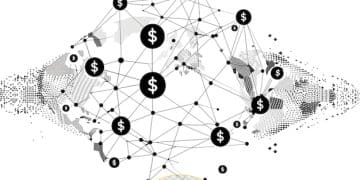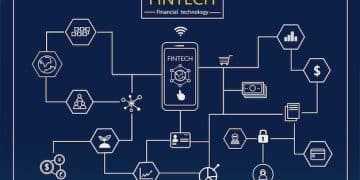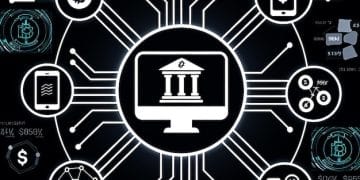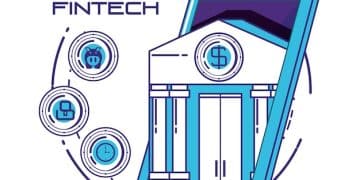Open Banking APIs to Redefine US Personal Finance by 2025
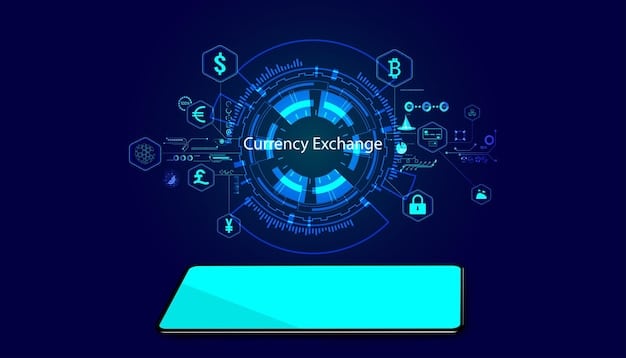
By 2025, Open Banking APIs will fundamentally redefine personal finance management in the US by empowering consumers with greater control over their financial data, fostering innovation in personalized financial tools, and driving a more interconnected and efficient financial ecosystem.
The financial landscape is in constant evolution, and at its heart lies a transformative force: Open Banking APIs. These powerful interfaces are not merely technical advancements; they represent a paradigm shift in how individuals interact with their money. The question of How Will Open Banking APIs Redefine Personal Finance Management in the US by 2025? is not just hypothetical, but an urgent inquiry into the near future of financial autonomy, innovation, and digital convenience for millions of Americans.
The Foundation of Open Banking: Understanding the API Revolution
Open Banking, at its core, is a set of regulations and technologies that allow third-party financial service providers to access consumer banking data with explicit customer consent. This access, facilitated through Application Programming Interfaces (APIs), enables a secure and standardized way for different financial institutions and fintech companies to communicate. It’s a move away from the traditional, siloed banking model towards an ecosystem of interconnected services.
For too long, individual financial data has been locked within the proprietary systems of banks, making it challenging for consumers to gain a holistic view of their financial health or to leverage their data for better services. Open Banking APIs break down these barriers, creating a more transparent and competitive environment.
What are Open Banking APIs?
Open Banking APIs are the technical backbone enabling secure data exchange. They are essentially a set of rules and protocols by which different software applications communicate with each other. In the context of banking, they allow authorized third parties to access specific customer data (like transaction history, account balances, and loan information) from banks, provided the customer gives permission.
- Standardized Communication: APIs ensure a consistent and secure method for data transfer, regardless of the bank or fintech platform.
- Consent-Driven Access: Consumer consent is paramount; no data can be shared without explicit permission from the account holder.
- Enhanced Security: Robust security protocols are embedded within API frameworks to protect sensitive financial information.
The Shift from Screen Scraping to Secure API Access
Historically, many personal finance management (PFM) tools relied on “screen scraping” – a method where users provided their bank login credentials to a third-party app, which would then “scrape” data directly from the bank’s website. This method, while functional, presented significant security and privacy concerns. Open Banking APIs eliminate the need for screen scraping by providing a secure, tokenized, and permission-based alternative.
This transition not only enhances data security but also improves the reliability and efficiency of data aggregation, paving the way for more sophisticated financial applications. Consumers no longer need to share sensitive login details, empowering them with more control and peace of mind.
The adoption of these APIs is not just a regulatory push but a market-driven imperative. As consumers increasingly demand more personalized and integrated financial experiences, banks and fintechs are recognizing the value of seamless data exchange. This collaborative environment unlocks new possibilities for innovation in the US financial sector.
Empowering Consumers: Personalization and Control Over Finances
One of the most profound impacts of Open Banking APIs on personal finance management in the US will be the unprecedented level of personalization and control afforded to consumers. Imagine a world where your financial accounts, regardless of the institution, can “talk” to each other securely and intelligently, providing you with tailored insights and services. By 2025, this will be a tangible reality for many Americans.
Traditional banking often feels generic, with one-size-fits-all products. Open Banking APIs shatter this mold, allowing financial applications to analyze individual spending habits, income patterns, and long-term goals to offer highly specific recommendations and solutions. This shift means a move from reactive to proactive financial management.
Tailored Financial Advice and Budgeting Tools
Open Banking will enable PFM apps to provide hyper-personalized financial advice. Instead of generic budgeting tips, an app powered by these APIs could tell you, for instance, that based on your last three months’ spending, you are likely to overspend on dining out by $50 this month and suggest specific, achievable adjustments. This level of granular insight transforms abstract financial planning into actionable steps.
- Real-time Spending Analysis: Automatically categorize transactions and highlight spending trends across all accounts.
- Personalized Goal Setting: Link savings goals directly to spending habits, offering realistic pathways to achieve them.
- Automated Budgeting: Set up intelligent budgets that adapt to unexpected income or expenses.
Seamless Aggregation and Holistic Financial Views
The ability to securely link multiple bank accounts, credit cards, investment portfolios, and even loan data into a single interface is a game-changer. This comprehensive view, facilitated by Open Banking APIs, allows consumers to understand their entire financial picture at a glance. No more logging into five different portals to track your money.
By 2025, PFM tools will move beyond simple data aggregation to offer predictive analytics. For example, an application could forecast your cash flow for the next few weeks, alert you to potential shortfalls, and even suggest pre-approved credit lines from various providers at competitive rates – all within a single, trusted interface. This holistic approach simplifies financial decision-making and reduces financial stress.

Furthermore, the control aspect extends to data permissions. Consumers will have clear dashboards showing which third parties have access to their data, for what purpose, and the ability to revoke that access at any time, promoting absolute transparency and trust in the digital financial ecosystem.
Innovation in FinTech: New Products and Services Enabled by APIs
The advent of Open Banking APIs is not just about making existing financial services better; it’s about catalyzing entirely new categories of financial products and services. By 2025, the US fintech landscape will be vibrant with innovative solutions that were previously impossible due to data fragmentation. This innovation will benefit consumers by offering more choice, better value, and specialized tools tailored to niche needs.
Startups and established financial institutions alike are already experimenting with these capabilities, leading to rapid development cycles and a competitive environment that ultimately serves the consumer. The regulatory push for Open Banking, combined with technological readiness, creates fertile ground for this innovation bloom.
Hyper-specialized Financial Tools
Imagine apps designed specifically for freelancers to manage irregular income and taxes, or for gig economy workers to optimize their earnings and benefits across multiple platforms. Open Banking APIs make these hyper-specialized tools feasible by providing the granular data needed to build truly effective solutions. These tools can integrate banking, invoicing, tax planning, and even investment strategies into a cohesive platform.
Beyond niche markets, we could see mainstream applications offering dynamic loan refinancing options based on real-time credit checks, or automated savings programs that identify optimal times to transfer funds based on current account balances and upcoming expenses. The possibilities are vast and continually expanding.
Streamlined Lending and Investment Experiences
For lenders, Open Banking APIs simplify the credit assessment process. Instead of relying solely on traditional credit scores, lenders can, with consent, access real-time transaction data to get a more accurate picture of an applicant’s financial health. This can lead to faster loan approvals, more competitive interest rates, and financial products accessible to a broader range of consumers, including those with thin credit files.
In the investment realm, APIs allow PFM tools to monitor spending habits and automatically suggest small, regular investments into diversified portfolios. They can also integrate with robo-advisors, providing them with more comprehensive data to optimize investment strategies based on an individual’s complete financial picture, not just their investment account balance.
The interplay between different financial services becomes seamless. For instance, a PFM app could identify an opportunity to save money by consolidating high-interest debt, then automatically present pre-qualified options from various lenders, and even help execute the transfer of funds. This level of integration streamlines complex financial tasks, making them accessible to a wider audience.
Security and Privacy: Addressing the Core Concerns
Any discussion about sharing financial data naturally raises paramount concerns regarding security and privacy. As Open Banking APIs redefine personal finance management in the US by 2025, robust safeguards are not merely optional; they are foundational requirements for trust and adoption. The industry is continually evolving its security posture to not only meet but exceed consumer expectations.
The regulatory frameworks emerging in the US, drawing lessons from pioneering regions like the UK and EU, emphasize consent-driven data sharing and advanced encryption. This approach ensures that while data flows more freely between trusted parties, it does so under stringent controls designed to protect the individual.
Advanced Encryption and Data Protection Protocols
Open Banking APIs are built upon state-of-the-art security technologies. All data transmissions are typically secured with end-to-end encryption, similar to what banks use for their direct online services. This means that financial data is scrambled and unreadable to unauthorized parties as it travels between applications.
- TLS/SSL Encryption: Standard for secure internet communication, protecting data in transit.
- OAuth 2.0 Authorization: A secure protocol that allows third-party applications to obtain limited access to user accounts without sharing passwords.
- Multi-Factor Authentication (MFA): Adds an extra layer of security, typically requiring a second form of verification.
The Role of Consumer Consent and Data Control
A cornerstone of Open Banking is explicit consumer consent. Users must actively grant permission for their data to be shared, and they retain the power to revoke that permission at any time. This contrasts sharply with older methods of data access where consent was often implicit or less clearly defined.
By 2025, PFM apps will feature intuitive dashboards where users can easily see who has access to what data, when that access expires, and manage their permissions with a few taps. This transparency empowers consumers, fostering a sense of control over their financial information rather than feeling exposed.
Furthermore, regulations often mandate that financial institutions and third-party providers adhere to strict data minimization principles, meaning they can only request and store the data absolutely necessary for the service they provide. This prevents overcollection of sensitive information and further strengthens privacy safeguards. The move towards tokenization, where actual account numbers are replaced with non-sensitive tokens for transactions, also significantly reduces the risk of fraud.
Regulatory Landscape and Adoption in the US
While Open Banking has seen rapid adoption in other parts of the world, the US regulatory environment operates differently, often characterized by a more fragmented and market-driven approach. However, by 2025, significant strides are expected in both regulatory clarity and industry adoption, solidifying the role of Open Banking APIs in personal finance.
The absence of a single, overarching federal mandate for Open Banking presents a unique challenge and opportunity. Instead of a top-down directive, evolution is driven by consumer demand, competitive pressures among financial institutions, and initiatives from regulatory bodies like the Consumer Financial Protection Bureau (CFPB).
The CFPB’s Role and Section 1033 of Dodd-Frank
The CFPB has been a key advocate for data portability, citing Section 1033 of the Dodd-Frank Act. This section grants consumers the right to access their own financial data in an electronic format. While not explicitly an “Open Banking mandate,” the CFPB’s interpretation and proposed rules are pushing financial institutions towards API-based data sharing, rather than less secure methods like screen scraping.
By pushing for rules that make it easier and safer for consumers to share their financial data with third-party apps, the CFPB is laying the groundwork for a more robust Open Banking ecosystem. These rules, expected to be fully implemented by 2025, will standardize data formats and security requirements, making integration smoother for fintechs and more secure for consumers.
Industry-Led Initiatives and API Standardization
In parallel to regulatory developments, much of the progress in US Open Banking is being driven by industry consortia and individual financial institutions. Organizations like the Financial Data Exchange (FDX) are playing a crucial role in developing common API standards and best practices. These standards ensure interoperability and reduce the technical burden for both banks and fintechs.
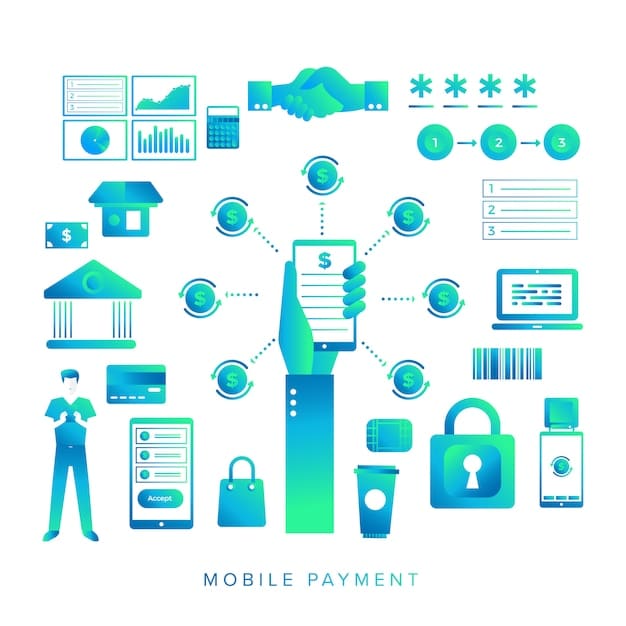
Major banks are increasingly investing in their own API programs, not just as a defensive measure against potential regulation, but as a strategic move to partner with fintech innovators and enhance their own digital offerings. This cooperative spirit, albeit competitive, will accelerate the deployment of Open Banking APIs across the US financial landscape, leading to a much more interconnected financial system by 2025.
The market forces of consumer demand for better digital experiences, coupled with the regulatory push for data rights, are creating an irreversible momentum. By 2025, the US will have a functional, secure, and increasingly standardized Open Banking framework that will fundamentally alter how individuals manage their finances.
Challenges and Future Outlook for Open Banking in the US
While the trajectory for Open Banking APIs redefining personal finance management in the US is overwhelmingly positive, it’s crucial to acknowledge the challenges that lie ahead. Navigating these obstacles will be key to realizing the full potential of this financial revolution by 2025. These challenges range from technical complexities to the intricate dance of regulatory alignment and consumer trust.
Overcoming these hurdles will require sustained collaboration between financial institutions, fintech innovators, regulatory bodies, and consumers. The future outlook remains bright, but attentive policy-making and strategic industry execution will be paramount.
Interoperability and Data Standardization Hurdles
One of the primary challenges in a fragmented market like the US is achieving true interoperability. With numerous banks, credit unions, and fintechs, ensuring that all systems can “speak the same language” through standardized APIs is a monumental task. While organizations like FDX are making progress, complete uniformity might still be aspirational by 2025.
- API Versioning: Managing different versions of APIs across various institutions can create integration headaches.
- Data Quality: Ensuring consistent data quality and completeness from different sources is essential for reliable PFM tools.
- Legacy Systems: Many older financial institutions still rely on legacy technology, making API integration a costly and complex endeavor.
Building and Maintaining Consumer Trust
For Open Banking to truly redefine personal finance, consumers must trust the system. Despite robust security measures, initial anxieties about data sharing are natural. Educating the public about the benefits, security protocols, and their rights to control data access will be an ongoing effort that extends well beyond 2025.
Breaches, even if unrelated to Open Banking protocols, can erode confidence. Therefore, continuous emphasis on transparency, clear communication about data usage, and swift, effective responses to any security incidents are vital. The long-term success hinges on fostering an environment where consumers feel empowered and protected, not vulnerable.
Looking ahead, by 2025, we can expect Open Banking to have moved past its foundational stages in the US. There will be a more mature ecosystem with established API standards, clearer regulatory guidelines, and a growing suite of innovative PFM applications. The shift will not just be about data access, but about data intelligence – using aggregated, consented information to provide unparalleled financial insights and automate complex financial decisions for the everyday American. The journey to a fully integrated and consumer-centric financial landscape will be well underway.
| Key Aspect | Brief Description |
|---|---|
| 🚀 Data Consolidation | Unifies all financial data across institutions into single, comprehensive view for users. |
| 💡 Personalized Insights | Enables AI-driven PFM apps to offer tailored advice based on individual financial behavior. |
| 🔒 Enhanced Security | Replaces older methods with secure, consent-based API access, protecting user data. |
| 🤝 FinTech Innovation | Fosters development of new, specialized financial products and services for consumers. |
Frequently Asked Questions About Open Banking APIs in US Personal Finance
For the average US consumer, Open Banking means greater control over their financial data. It allows them to securely share their banking information with third-party apps and services, leading to more personalized financial advice, improved budgeting tools, and innovative products that can help them save money and manage their finances more effectively across multiple accounts.
Open Banking improves security significantly by replacing less secure methods like “screen scraping” with standardized, encrypted APIs. You grant explicit consent for data sharing and can revoke it at any time. This token-based access means you never share your bank login credentials with third-party apps, reducing the risk of fraud and unauthorized access to your sensitive financial information.
While a federal mandate is still evolving, consumer demand and regulatory pushes from the CFPB are driving widespread adoption. Major financial institutions and many fintechs are already participating or developing API capabilities. By 2025, a significant majority of US banks, especially larger ones, are expected to facilitate Open Banking through APIs, though universal adoption might take longer due to varying sizes and legacy systems.
You can expect to see highly personalized budgeting and savings apps that analyze your full financial picture, comprehensive financial health dashboards, automated debt management tools, and more efficient investment platforms. Specialized apps for specific needs, like freelancer income tracking or seamless multi-bank loan applications, will also become more prevalent, streamlining complex financial tasks for diverse user groups.
The CFPB is instrumental in promoting data portability under Section 1033 of the Dodd-Frank Act. They are working on rules that would require financial institutions to establish secure data-sharing mechanisms, effectively pushing for an API-first approach to data access. The CFPB’s efforts aim to empower consumers with greater control over their financial data, foster competition, and ensure fair practices in the evolving Open Banking ecosystem.
Conclusion
The journey towards fully realized Open Banking in the US by 2025 represents a pivotal moment for personal finance management. It promises a future where individuals reclaim agency over their financial data, benefiting from a rich ecosystem of personalized, insightful, and profoundly efficient tools. While challenges in standardization and trust building persist, the foundational momentum driven by consumer demand, regulatory advocacy, and fintech innovation is undeniable. By enabling secure and consented data flows, Open Banking APIs are not just redefining how we manage our money; they are empowering a new generation of financially savvy consumers, fostering an era of unprecedented transparency and customization in the American financial landscape. The transformation will be comprehensive, touching every facet of how we interact with our economic lives.

